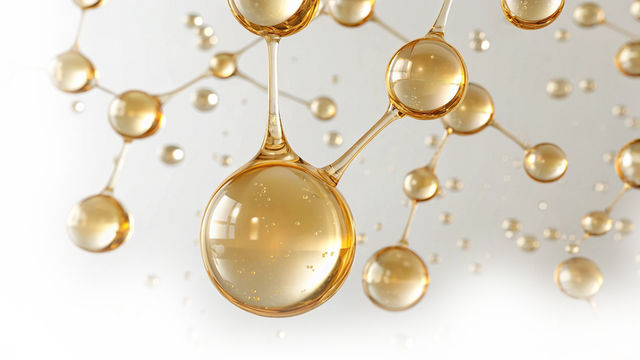
Panel discussion on...
Peptides
Emerging Trends in Peptide Use: Innovations and Applications
How are multifunctional peptides changing the landscape of personal care products?
Multifunctional peptides have transformed the personal care industry in recent years by bringing a new dimension to product performance and new expectations related to desirable beauty ingredients. These small chains of amino acids, whose function is to stimulate various cellular functions, offer a more effective approach in cosmetics. As true sought-after molecules of reference in all beauty categories (skin care, hair care, makeup), their notoriety has been significantly boosted by Skintellectuals (consumers becoming experts in meeting skin needs) on social networks and the current role of ingredients in consumer purchasing decisions. Their mechanisms of action in many physiological processes make peptides attractive for a variety of indications related to the skin: antioxidant, anti-inflammatory, healing, anti-wrinkle, etc. According to Mintel, nearly 50% of Chinese women associate oligopeptides with anti-aging benefits (1).
Mechanisms of Action of Peptide and Market Perception
Can you explain how peptides function at the cellular level to promote skin health?
Peptides correspond to small fragments of proteins containing 2 to 50 amino acids. Their composition impacts their tridimensional structure giving them their specificity. Indeed, each peptide targets and binds to a specific receptor, inducing its activation or inhibition, thus regulating underlying biological pathways. In the skin, peptides can interact with all the cells composing this tissue, from keratinocytes to fibroblasts, including melanocytes and others. With this overview, we can imagine that peptides can act on all skin cells to promote skin health.
What are the key differences between natural and synthetic peptides in terms of efficacy and safety?
Peptide synthesis is a technology commonly used to produce peptides with a defined sequence. Peptides are chemically synthesized by the condensation reaction of the carboxyl group of one amino acid to the amino group of another. While they stand out by their elevated biological specificity, these peptides obtained by chemical processes have only limited activity towards a unique biological target. Moreover, if chemical synthesis displays precision tailor-made synthesis, they can have bad environmental credentials. At the present time, this lack of transversality and of naturality is no longer consistent with the needs and expectations of consumers who are demanding natural, multifunctional, and effective products.
The plant kingdom, for its part, contains protein fractions that can be considered as sources of natural peptides. The development of dedicated and mastered industrial processes based on natural hydrolysis allows the obtention of biopeptides that can be particularly interesting in skin care products. Due to their molecular diversity, these biopeptides have the capacity to act transversally on several biological targets, thus having an impact on the different cutaneous compartments (epidermis, dermal- epidermal junction, and dermis). This characteristic is remarkable in the fight against the disorders induced by aging. In addition, they offer comfort to the skin, far from the undesirable effects (dryness, itching, etc.) that can be caused by certain molecules subject to precautions for use (retinol, for example). They thus perfectly meet the criteria requested by the consumers in terms of naturality, potent efficacy and safety.
Sustainability and Peptides
What role does biotechnology play in the development of sustainable peptides for personal care products?
The great adaptability of microorganisms to survive under different stresses (e.g. drought, low nutrient content) is a real source of inspiration and lies in their singular metabolism. These natural factories display great potential to generate unique molecules of interest for skin health. Ogataea siamensiswas identified for its capacity to metabolize the rare nutrients present on the aerial parts of its host plant (2, 3). This selective advantage is conferred by the production of sulfur-containing molecules, among them peptides. In this context, SILAB decided to produce depigmenting peptides by developing a tailor-made bioguiding process. Then a patented extraction process was applied to obtain odorless sulfur-containing peptides from Ogataea siamensis. Clinical studies were conducted and reveal that the resulting natural active ingredient acts on the different steps of melanogenesis and thus limits skin pigmentation disorders. Mastering biotechnology processes is a sustainable and safe alternative to the scarcity of natural resources for preserved biodiversity. An inexhaustible source of high value-added molecules, these microscopic cell factories combined with dedicated bioguiding approaches bring a new field of possibilities to skin care.
Panelists
References and notes
- KuRunData/Mintel, March 2022 (Base: China: 2,913 female internet users aged 18-59)
- Yurimoto H, Shiraishi K, Sakai Y. Physiology of Methylotrophs Living in the Phyllosphere. Microorganisms. 2021 Apr 12; 9( 4): 809.
- Yurkiv M, Kurylenko O, Vasylyshyn R, Dmytruk K, Fickers P, Sibirny A. Gene of the transcriptional activator MET4 is involved in regulation of glutathione biosynthesis in the methylotrophic yeast Ogataea (Hansenula) polymorpha. FEMS Yeast Res. 2018 Mar 1; 18 (2).






































